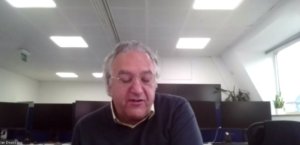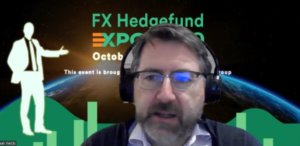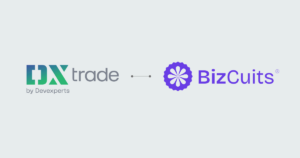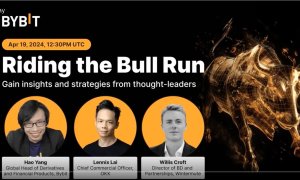Live from FX Hedge Fund Expo 2020: Can your tech give you easy access to hedge funds?
The expertise and structure to place YOUR broker into the realms of the FX hedge fund is well and truly available, and has complete synergy with the spot FX business. Live, we discuss the way forward for multi-asset FX hedge funds, touch on TCA, execution and how your broker can manage liquidity pools efficiently. Now’s the time!

Reporting live today from the FX HedgeFund Expo 2020, hosted by Advanced Markets and sponsored by major institutions including Nomura, 360T, Draycliffe, Haysmacintyre LLP, and BOV Fund Services, FinanceFeeds is participating in the discussion that is vital in order to assist the FX industry gain closer ground with the important hedge fund sector, toward which the FX business should be aspiring.
As the day progresses, technology is the next feature for discussion, and
During the previous panel, covered live by FinanceFeeds today, cost, location and the synergy between FX brokers and hedge funds were poignant issues.
According to Rebecca Xuereb of BOV Fund Services Ltd., EU fund setup gives investors a certain level of confidence. But that also means you have to deal with very frequent updates and guidelines coming out of the regulators. When it comes Malta, PIFs offer self managed structure, lighter regulatory regime. Most clients opting in for PIF are startups. It is very efficient from the cost size.
That is indeed an important consideration, however what about technology?
Prior to the panel’s commencement, FinanceFeeds spoke to hedge fund manager Robert Lafforet in the audience, who said “I hope the FX hedge fund market will benefit from actual crisis, not that I am happy but rates are so low, and equities so much exposed.”
As the panel commenced, participants with expertise in the technology sector began to prepare their perspectives.
Yue Malan of Aite Group, Jonathan Webb, COO of C8 Technologies, Christina Qi of Domeyard, and Alan Dweck of BidFX held a high quality discussion on how to access FX strategies.
Ms Qi, who started Domeyard, a HFT hedge fund 9 years ago, began trading FX a few years back and has an interest in looking at how different an asset class FX is from others in funds.
Mr Dweck, who runs BidFX, provides institutional FX EMS for mainly hedge funds. Originally he was a trader across various instruments including FX, and his claim to fame was that in the 2000s he helped Bloomberg build out their FXGo platform, being involved in the early development of the product. 8 years ago, he developed BidFX from TradingScreen, and now it is a prominent technology provider for the hedge fund EMS space.
Moderated by Ms Malan, the panel looked at how the current market due to the COVID issues has done damage to the hedge fund sector.
Ms Qi says that many employees have begun working from home, and this exposes the IP of hedge funds, and the level of productivity has reduced due to domestic distractions. “It is harder to be able to reach your colleagues and peers to ask questions, so we still are committed to VPN access, and we were removed from our office due to the restrictions, having to get used to working remotely.”
“I think remote working will now have to be accepted, as it is long term.”

Mr Webb said “From the point of view of the FX market itself, markets have benefited from volatility, so what we are seeing is a lot more attention to the FX market, and a lot of interesting FX moves. From our side, one of the major knock on effects of the lockdowns is the inability to travel, which has restricted onsite due diligence. Asset allocators wanting to go to the site of the hedge fund cannot do that, so they have had to wait, which is having a negative effect. We have had an upswing of itnerest because of this, because we are taking away the need to do due diligence onsite by asset allocators, they can simply import the strategy”
Mr Dweck then said “As a technology supplier, everyone is working from home and this is putting incredible ask from technology. If this had happened 10 years ago, it would have been impossible to deliver execution services into people’s homes with all of the trading scrutiny that is required. We have seen a lot more scrutiny over trades because people are trading from home, but from a business point of view, we are seeing proper trends now which we haven’t seen for a while in the market, which is great.”
“We have been very rangebound over the past few years, so there has been an adjustment in the way people trade which has been very good for hedge funds. We are now having to engage a lot in training people to use our software, we used to have people sitting alongside fund managers, showing them what to do, which has changed” said Mr Dweck.
“This has all happened seamlessly, no services have had any major downtime, it has all transferred to home working flawlessly and I think that is amazing and a credit to the whole industry really” said Mr Dweck.
Ms Malan said “Without the cloud infrastructure, cyber security and ease of access that we now have, it would have been impossible to operate after March.”
Ms Malan then offered a poll to the audience, asking if TCA (transaction analysis) tools in FX are sufficient to address hedge fund needs, to which respondants from the audience responded with 60% saying yes, and when asked if current technology can address the main worry of investors, that being performance during periods of market stress and volatility, to which 72% of respondents said yes.
Mr Dweck expanded on TCA. “TCA is only as good as the data, and getting the right data is paramount. There are a lot of TCA solutions out there but I would question some of the data that these reports are based on.”
“TCA has come a long way, and on our side we are investing heavily in TCA, but I think one of the areas that is missing is that there is a feedback link missing between the feedback reports and the execution style. It’s all well having a report, but if that doesn’t fit into the way you trade, then it’s a box ticking exercise” said Mr Dweck.

“Pre-trade analytics is best looked at by liquidity providers who see a lot of both ends of the market, and there are a lot of flows making up all areas of the market. When looking at post-trade analytics, you don’t want to go to the liquidity provider for that, it’s like asking the lion to look after the meat store. In this case you’d need to look at independent TCA, outside of the market making environment” said Mr Dweck.
“You do need post-trade TCA to feed into pre-trade TCA, so it is a difficult thing to get right if you want to make it meaningful and not just a box ticking exercise” said Mr Dweck.
Ms Qi then said “DO we look for different vendors for each technology? For us, we need to look at what are critical areas, the secret sauce of the business. That is not the part of the business you want to outsource. For us, execution is part of our secret sauce, and likely to be critical to most HFT firms, it was a decision to build on proprietary tools for TCA, that said there are other vendors out there that are fantastic, but I would encourage you to look at all available, as building your own is a good solution but there is a cost in terms of time.”
“The amount of time it takes to build this up can be counter productive, however if you want to launch as soon as possible you could be smart about making a good decision to go with a vendor, and then build your own alongside” she said.
Mr Webb said “TCA for us is a bit different, as our strategies are daily, and even monthly. We mark the closing auction, or if someone wants to trade we have basic algos such as TWAP and VWAP, so I think it is less sensitive if you trade once per day in terms of trying to get the best execution. Trading with TWAP or VWAP for us is fine, but TCA is a good tool if needing to trade more frequently.”
“Alot of TCA vendors now are looking at machine learning and AI” said Ms Malan.
“Mr Dweck said “I think AI is a term which is often thrown around and is a term which often doesn’t mean what we think it means. I think AI is at the very beginning of what it may become, and I do not think anyone is really using proper AI and it is not what it is cracked up to be. To have adaptive strategies built into the analysis – how good this is and how capable the technology is of developing this, I would question.”
Quite right indeed.
Ms Qi also agreed, saying “AI is slow and increases latency, and can only be as smart or dumb as the people programming it, therefore it is not really proper intelligence. The precursor to AI is for us to understand how to analyze data. AI has done a bad job of analyzing the markets so far, there have been ETFs and big companies which have gone into million dollar projects and then as soon as they launch it’s a big flop. It was supposed to be the next big thing, with robots operating the stock markets, however the markets are also only as smart or dumb as the people trading them, and with unusual things like oil going going negative, it is impossible for AI to predict this kind of event, so I would say AI is overhyped.”
“In 2016, AI was the topic of all conferences, but now it has been understood to not be so relevant now” she said.
Mr Webb said “Doing these automations on interday markets is hard for sure. We can see daily or longer term efforts where some are making headway with more data coming in on longer term trends, we are excited about that and we think everything is relatively long term. To expect to do this level of processing on something more than daily or weekly models has proved ineffective, and does not show AI at its best. As Alan said earlier, genetic algos have been around as long as I’ve been trading, however there are some really exciting things coming through such as tech which analyzes photos like Google Photos, and taking this and using them to analyze the markets has some potential but it’s very early days.”
Ms Qi then said “People always request data back to the 1960s from us, so we say the worse it gets the longer you go back. The rules of the market keep changing far often than other things in which data is available such as games of chess, therefore it is far harder to analyze and predict using AI in the future.”
Ms Malan then moved toward algo usage, where it is being expanded to not only FX spot but NDFs. She then turned to Ms Qi to find out how to stress test algos.
“In terms of how we treat the execution algos, there are three primary ways we do so, one is more static, like hierarchical conditions, using switching models, the second is that we use dynamic systems such as machine learning, reinforcement learning and similar. The third way to tweak algos is very manual, which is something we try to avoid as a firm that tries to have as much uptime as possible, we would therefore only tweak algos manually if there was an event on something going negative, for example, where things are not usually accounted for so we can decide what to do in that type of situation” she said.
Mr Webb said “If you don’t trade very often, it is not the driving force of your decisions, however you can trade into closing auctions and fixes, so in a way you can avoid transaction slippage by doing that, but I think we are more looking at basic algo execution. In our view, that is why we work with clients like Advanced Markets and BidFX because people who have got advanced algos and techniques are ideal for us, we would rather let the experts handle this aspect.”
Mr Dweck said “For the HFT guys, who want to build their own algos, that would be the right way to go, and then if you are taking much longer positions, teh smaller execution are of lesser importance to the overall return. We see a lot of people right in the middle, where they may not be high frequency, but they trade frequently intra-day, and look to use the algo tools that are made. Therefore you have an array of good algos that have been developed by liquidity providers, and then others that have been developed by people like ourselves which encompass all the parameters for clients to control. They have to work in the datacenter, they cannot work from people’s homes as they are too scattered, and it needs managing centrally, however it all depends on how frequently you trade and what you do to decide what approach to take.”
Today’s audience were polled on two additional aspects relating to their business, the first being whether their fund has an annual R&D budget, to which 60% of respondants from the audience said they have 0.1% of assets under management as their R&D budget, and the second of which was how many trading platforms are used, the majority of the audience, 80%, saying they use two platforms.
Mr Webb followed up on this, saying that he would ascertain which firms funds already use, and what their needs are. “There is a very wide variety of platforms around at the moment, and you have to ask yourself if you are after systematic best price, or are you looking for disclosed trading. A lot of my life was spent trading discretionarily, and trading on a disclosed basis worked on my favor, we could do a lot on an anonymous basis for reasonable sized trades without anyone knowing about it, but I think there are several ways to access liquidity and if you want FX research, you should use disclosed, but if you only want the best price, that’s not important.”
Ms Qi says that if you are liquidity taking, it should depend on your counterparty, how fast they can process quotes, and that data costs play a role.
Indeed so, and this is one of the reasons that XTX Markets is now heading the Tier 1 FX liquidity provision sector, beating the traditional banks.
Mr Dweck said that at the early days of TradingScreen, it was like fitting a square peg into a round hole, dealing with FX hedge funds. The solution was to create BidFX. “As BidFX took off, people began to agree that this is a really good solution. OTC FX does not trade in an isolated matter. A few people are just looking at FX. Macro they’re looking at other levers that are operating such as equities and most good trading strategies are inclusive of all of those. I therefore think that a multi-asset trading environment is vital.”
He is indeed correct, and FinanceFeeds has been publicly detailing this need for many years.
“Some of the stand alone FX platforms should begin to work in a multi asset matter, but I understand why they have not done so until now” he said.
“We intermediate between different liquidity pools” said Ms Qi. “HFT is not scalable, and for us we definitely have faced scalability issues, however trying different venues, different vendors and strategies within one venue are attempts we have made to scale, however it has been a challenge.”
Scalability for brokers, especially those with their own end to end infrastructure, is their strong point, and despite the size of the market being an issue, they have largely mastered that.
If the FX industry’s hedge fund technology providers are very much aligned with the structure of the non-hedge fund, standard retail FX business, what are we all waiting for? It is time to elevate your business and raise your aspirations to attract hedge funds instead of retail IBs as properly aligned partners, with no conflicts of interest at all, and a totally synergic business model.
Today’s display of expertise from Mr Webb, Ms Qi and Mr Dweck shows that we have the absolute experts ready to support your business as it goes down the hedge fund route.
Onwards and upwards!









